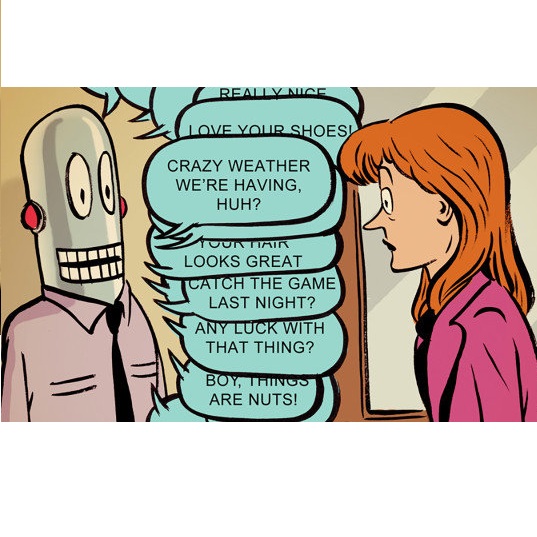We evaluate the reliability of two chatbots, ChatGPT (4o and o1-preview versions), and Gemini Advanced, in providing references on financial literature and employing novel methodologies. Alongside the conventional binary approach commonly used in the literature, we developed a nonbinary approach and a recency measure to assess how hallucination rates vary with how recent a topic is. After analyzing 150 citations, ChatGPT-4o had a hallucination rate of 20.0% (95% CI, 13.6%-26.4%), while the o1-preview had a hallucination rate of 21.3% (95% CI, 14.8%-27.9%). In contrast, Gemini Advanced exhibited higher hallucination rates: 76.7% (95% CI, 69.9%-83.4%). While hallucination rates increased for more recent topics, this trend was not statistically significant for Gemini Advanced. These findings emphasize the importance of verifying chatbot-provided references, particularly in rapidly evolving fields.
相關內容
This work identifies 18 foundational challenges in assuring the alignment and safety of large language models (LLMs). These challenges are organized into three different categories: scientific understanding of LLMs, development and deployment methods, and sociotechnical challenges. Based on the identified challenges, we pose $200+$ concrete research questions.

Reasoning, a crucial ability for complex problem-solving, plays a pivotal role in various real-world settings such as negotiation, medical diagnosis, and criminal investigation. It serves as a fundamental methodology in the field of Artificial General Intelligence (AGI). With the ongoing development of foundation models, e.g., Large Language Models (LLMs), there is a growing interest in exploring their abilities in reasoning tasks. In this paper, we introduce seminal foundation models proposed or adaptable for reasoning, highlighting the latest advancements in various reasoning tasks, methods, and benchmarks. We then delve into the potential future directions behind the emergence of reasoning abilities within foundation models. We also discuss the relevance of multimodal learning, autonomous agents, and super alignment in the context of reasoning. By discussing these future research directions, we hope to inspire researchers in their exploration of this field, stimulate further advancements in reasoning with foundation models, and contribute to the development of AGI.
While large language models (LLMs) have demonstrated remarkable capabilities across a range of downstream tasks, a significant concern revolves around their propensity to exhibit hallucinations: LLMs occasionally generate content that diverges from the user input, contradicts previously generated context, or misaligns with established world knowledge. This phenomenon poses a substantial challenge to the reliability of LLMs in real-world scenarios. In this paper, we survey recent efforts on the detection, explanation, and mitigation of hallucination, with an emphasis on the unique challenges posed by LLMs. We present taxonomies of the LLM hallucination phenomena and evaluation benchmarks, analyze existing approaches aiming at mitigating LLM hallucination, and discuss potential directions for future research.
We consider the problem of discovering $K$ related Gaussian directed acyclic graphs (DAGs), where the involved graph structures share a consistent causal order and sparse unions of supports. Under the multi-task learning setting, we propose a $l_1/l_2$-regularized maximum likelihood estimator (MLE) for learning $K$ linear structural equation models. We theoretically show that the joint estimator, by leveraging data across related tasks, can achieve a better sample complexity for recovering the causal order (or topological order) than separate estimations. Moreover, the joint estimator is able to recover non-identifiable DAGs, by estimating them together with some identifiable DAGs. Lastly, our analysis also shows the consistency of union support recovery of the structures. To allow practical implementation, we design a continuous optimization problem whose optimizer is the same as the joint estimator and can be approximated efficiently by an iterative algorithm. We validate the theoretical analysis and the effectiveness of the joint estimator in experiments.
The dominating NLP paradigm of training a strong neural predictor to perform one task on a specific dataset has led to state-of-the-art performance in a variety of applications (eg. sentiment classification, span-prediction based question answering or machine translation). However, it builds upon the assumption that the data distribution is stationary, ie. that the data is sampled from a fixed distribution both at training and test time. This way of training is inconsistent with how we as humans are able to learn from and operate within a constantly changing stream of information. Moreover, it is ill-adapted to real-world use cases where the data distribution is expected to shift over the course of a model's lifetime. The first goal of this thesis is to characterize the different forms this shift can take in the context of natural language processing, and propose benchmarks and evaluation metrics to measure its effect on current deep learning architectures. We then proceed to take steps to mitigate the effect of distributional shift on NLP models. To this end, we develop methods based on parametric reformulations of the distributionally robust optimization framework. Empirically, we demonstrate that these approaches yield more robust models as demonstrated on a selection of realistic problems. In the third and final part of this thesis, we explore ways of efficiently adapting existing models to new domains or tasks. Our contribution to this topic takes inspiration from information geometry to derive a new gradient update rule which alleviate catastrophic forgetting issues during adaptation.

AI is undergoing a paradigm shift with the rise of models (e.g., BERT, DALL-E, GPT-3) that are trained on broad data at scale and are adaptable to a wide range of downstream tasks. We call these models foundation models to underscore their critically central yet incomplete character. This report provides a thorough account of the opportunities and risks of foundation models, ranging from their capabilities (e.g., language, vision, robotics, reasoning, human interaction) and technical principles(e.g., model architectures, training procedures, data, systems, security, evaluation, theory) to their applications (e.g., law, healthcare, education) and societal impact (e.g., inequity, misuse, economic and environmental impact, legal and ethical considerations). Though foundation models are based on standard deep learning and transfer learning, their scale results in new emergent capabilities,and their effectiveness across so many tasks incentivizes homogenization. Homogenization provides powerful leverage but demands caution, as the defects of the foundation model are inherited by all the adapted models downstream. Despite the impending widespread deployment of foundation models, we currently lack a clear understanding of how they work, when they fail, and what they are even capable of due to their emergent properties. To tackle these questions, we believe much of the critical research on foundation models will require deep interdisciplinary collaboration commensurate with their fundamentally sociotechnical nature.
This work considers the question of how convenient access to copious data impacts our ability to learn causal effects and relations. In what ways is learning causality in the era of big data different from -- or the same as -- the traditional one? To answer this question, this survey provides a comprehensive and structured review of both traditional and frontier methods in learning causality and relations along with the connections between causality and machine learning. This work points out on a case-by-case basis how big data facilitates, complicates, or motivates each approach.
Recent developments in image classification and natural language processing, coupled with the rapid growth in social media usage, have enabled fundamental advances in detecting breaking events around the world in real-time. Emergency response is one such area that stands to gain from these advances. By processing billions of texts and images a minute, events can be automatically detected to enable emergency response workers to better assess rapidly evolving situations and deploy resources accordingly. To date, most event detection techniques in this area have focused on image-only or text-only approaches, limiting detection performance and impacting the quality of information delivered to crisis response teams. In this paper, we present a new multimodal fusion method that leverages both images and texts as input. In particular, we introduce a cross-attention module that can filter uninformative and misleading components from weak modalities on a sample by sample basis. In addition, we employ a multimodal graph-based approach to stochastically transition between embeddings of different multimodal pairs during training to better regularize the learning process as well as dealing with limited training data by constructing new matched pairs from different samples. We show that our method outperforms the unimodal approaches and strong multimodal baselines by a large margin on three crisis-related tasks.
With the rapid increase of large-scale, real-world datasets, it becomes critical to address the problem of long-tailed data distribution (i.e., a few classes account for most of the data, while most classes are under-represented). Existing solutions typically adopt class re-balancing strategies such as re-sampling and re-weighting based on the number of observations for each class. In this work, we argue that as the number of samples increases, the additional benefit of a newly added data point will diminish. We introduce a novel theoretical framework to measure data overlap by associating with each sample a small neighboring region rather than a single point. The effective number of samples is defined as the volume of samples and can be calculated by a simple formula $(1-\beta^{n})/(1-\beta)$, where $n$ is the number of samples and $\beta \in [0,1)$ is a hyperparameter. We design a re-weighting scheme that uses the effective number of samples for each class to re-balance the loss, thereby yielding a class-balanced loss. Comprehensive experiments are conducted on artificially induced long-tailed CIFAR datasets and large-scale datasets including ImageNet and iNaturalist. Our results show that when trained with the proposed class-balanced loss, the network is able to achieve significant performance gains on long-tailed datasets.
We introduce a multi-task setup of identifying and classifying entities, relations, and coreference clusters in scientific articles. We create SciERC, a dataset that includes annotations for all three tasks and develop a unified framework called Scientific Information Extractor (SciIE) for with shared span representations. The multi-task setup reduces cascading errors between tasks and leverages cross-sentence relations through coreference links. Experiments show that our multi-task model outperforms previous models in scientific information extraction without using any domain-specific features. We further show that the framework supports construction of a scientific knowledge graph, which we use to analyze information in scientific literature.


